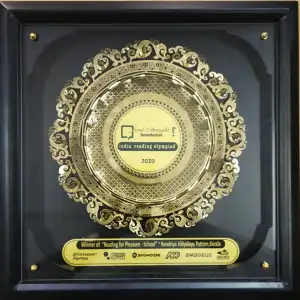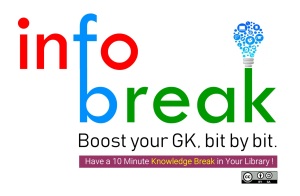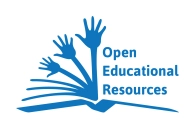
Ask the CBSE
I am a Class X student. In the recent Pre-Board Mathematics examination, only three internal choices were given, but in the CBSE sample papers on the Internet, six internal choices are provided. What will be the pattern in the board examination? Are the questions in the Maths paper only NCERT book-oriented? In Social Sciences and Science textbooks, a lot of information is given in red boxes. Are they required for the examinations?
(Sriram Rajaram)
For the pattern of the question paper, please follow CBSE sample question papers. In the Maths Class X paper, there will be six internal choices. It is advisable to prepare thoroughly from the prescribed NCERT textbooks. If you have finished the NCERT books, you can practise from other reference books. The information in boxes with red border is non-evaluative and meant for your enrichment only.
What is the format for writing articles, speeches and reports? (Pooma, Kerala)
Though it is advisable to follow the formats given in the Main Course Book for articles, messages, letters, telegrams and so on, you should not unduly worry about it as you can follow either the traditional or the modern formats so long as you maintain it consistently throughout the answer. Do not mix the formats.
I am in Class X. I usually score good marks in Maths. I heard that the examinations will be tough this year. Will there be questions outside the syllabus and those involving methods and formulas not given in the textbooks? (K. Anitha)
All questions will be based on the prescribed CBSE syllabus. A few questions testing application-understanding invariably involve unfamiliar situations and may not be directly found in the prescribed textbooks but will definitely be from the syllabus. It is not true that the Maths paper will be tough this time.
I am in Class XII. I feel that the miscellaneous questions in Maths and the textbook exercise questions in Physics are highly difficult. Is it necessary to be thorough with such questions? (L. Suvasini, Chennai)
Mathematics and Physics papers will have some questions to test application and understanding. They will be of a higher level than those testing knowledge. So you should devise an effective strategy of preparation that equips you to answer questions of different levels.
I am a Class X student. The Science book has a lot of mistakes. In condensation polymers, the large polymer molecule is incomplete and the reaction is `unbalanced’. For this, it should end with COOH and OH groups. Can we modify the content of our NCERT book and give the right answers?
(B. Ananda Narayanan)
You are required to give the correct answer in the exam. Hence you can modify the answers.
I am a Class XII student (Commerce) with Informatics as an optional subject. In the recent sample papers issued by the CBSE, there were many questions from the Class XI portions. Which portions should I focus on? I am following a book written by Sumita Arora.
(Kurien Joseph, Ernakulam)
The question papers will be based on the Class XII syllabus. If you have thoroughly worked out one textbook, you can refer to other books also.
I can work out Maths problems from course and reference books. But, when I get the same or similar questions in examinations, I am able to recollect the method, but lack confidence. So, I take more time than required to solve a particular question.
(V.R. Resbi, Korba)
There is no problem with you. What you need is confidence and self-belief that you can do it. Just practise maths with fun. Focus and relax when you are solving problems. When you know the method, you can definitely excel in the examination.
I am in Class XII. I have been told that in the Physics and Chemistry papers there will be internal choices for all five-mark questions. But it was not so in our APSC examinations. Has the question paper format changed?
(R. Chella Govinda Rajan)
The APSC people may be unaware of the recent changes made in the Class XII Physics and Chemistry papers. There will be internal choices for all five-mark questions in Physics, Chemistry and Biology.
I am a student of Class X. Do I have to study what is not mentioned in the NCERT book? We are asked to study additional content, especially in Social Sciences. We are asked to study diagrams from a supplementary book (S. Chand) for Science. Is this necessary?
(Student of Class X, Kollam)
CBSE prescribes only NCERT textbooks for Class X and the questions in the examination will be based on the CBSE curriculum. However, to enhance your application and understanding skills, you may refer to other books.
It is always better to stick to one book only for Class X except in Mathematics. Is the Hindi Course A grammar included in Hindi course B grammar portions?
(Veera Raghavan)
Please refer to the Secondary School Curriculum 2005 Vol. I.
I am in Class X. I want to know whether for 5-mark, 8-mark and 10-mark questions in English, the words are counted approximately or accurately for evaluation.
(Jinto James)
Please do not worry unduly about the word limit in English. No marks will be deducted if you exceed the word limit by a reasonable margin except in questions on telegrams.
I am a student of Class X. I have heard from my teachers that there are possibilities for asking general questions in Social Studies which are outside the NCERT textbook for the 2005 board examinations. Is it true?
(Thariq, Thrissur)
By the time this answer appears in print, the Social Studies examination would have been over. Questions in the Board examinations are based on the CBSE curriculum. NCERT books which are prescribed, cover most of the curriculum; however, once you have thoroughly studied NCERT books, you may also refer to other books for your enrichment. Do not have unnecessary fear about examinations.
I am a Class XII student. My teachers say that at least 5 marks for the board examination in Class XII will be from Class XI portions. Is this true? Is it enough that I am thorough with the NCERT textbook for the public examination? Could you please give me some tips for effective learning of Chemistry. Also, the exercise at the end of a chapter seems to be difficult. Will this type of questions find a place in the public question paper? How much per cent will there be for application level in Physics and Chemistry? What is the weightage of numericals in Physics and Chemistry?
(Joseph Chitilapilly, Cochin)
Questions in the Board examinations are based on the prescribed Class XII syllabus. After completing the NCERT book, you may refer to other recommended books in the subject. You can refer to the CBSE sample question paper to know the design of the question paper; 20 per cent of the questions in Physics and Chemistry will be application based. The weightage of numericals in Physics is of 15-18 marks out of 70 marks and 12 marks in Chemistry.
I am in Class XII. Some teachers say that in Business Studies, marks will be given only for points given in the NCERT textbook.
(Kumar G.)
The marking scheme developed for each subject is based on the correctness of the answers rather than any information given in a particular book. Especially for Class XII, the Board recommends other books besides those of NCERT. Please rest assured that full credit will be given to all correct answers.
I am in Class X. All I have received from my school is two sample papers and 10 practice papers on Social Sciences. Last week, you have answered that it is enough if I study the maps given in the sample papers. Is it enough if I study only these 12 papers for map work? Also, please clarify whether the Board has compiled and issued any books other than the sample papers sent to the school.
(Ben Kuruvila)
Apart from sample question papers the Board has not published any other compilation. For map work you can practise all the topics given in the sample question paper under the heading `List of Items for map work’ as well as those in the book.
For the Mathematics examination, is it sufficient to solve CBSE guess papers or should I refer to some other books?
(Mary Abraham)
CBSE does not publish any guess papers. You may practise solving as many problems as you can without overstraining yourself to score well in examinations.
I am a Class X student. I want to know if: 1. For History map, questions relating to only identification will be asked or marking in the map itself will also appear? 2. In postcard writing, is the date written on the right or above the salutation? 3. In Hindi, there are 24 `jeevanies’ and it is said that from these only one `jeevani’ of 3 marks will be asked. Is it true? If yes what should I do? 4. In Science, along with the scientist’s name should I learn about the year also?
(B. Mangalambika)
You may have to locate and label features, places, etc., in map work in History.
You can follow the conventional or the modern format in letter writing as long as you are consistent.
You will not be tested on names and dates of scientists.
I am in Class X. In Science papers, especially Biology, can we use colour pencil for diagrams to make concepts clearer?
(Shubhnagi Gupta)
Yes, you can use colour pencils for drawing diagrams in Biology.
I am a Class X student. The X standard NCERT Science text book `Science & Technology’ has given some extra information about selected topics in two types of boxes. One is an orange shaded box and the other an orange bordered box. I want to know whether information from both the boxes will be tested or not. If only information from one kind of box is tested, please indicate the box.
(Maria Kurian, Oman)
The preface to the Science & Technology Textbook clearly states that the content given in boxes with red border only is non-evaluative and hence will not be tested.
My sister will be writing her Class XII examinations. In her Class 10 certificate, her date of birth was wrongly printed. We contacted the regional office at Allahabad, but got a delayed response. Recently, we were told by the office that as it has been more than a year, the matter can only be taken up with the central office in New Delhi. What is the expected time by which we can get the correct certificate as she will be applying for various professional courses and want the Class X certificate for proof of age? She had to submit this wrong date of birth for her Class XII also. Can she apply for colleges with her true date of birth? Is there provision for an ad-hoc certificate indicating the correct date of birth?
(Chandan, IIT-Kanpur)
Application for correction in date of birth duly forwarded by the Head of School with required documents shall be entertained by the Board within two years of the date of declaration of Class X examination. You are advised to send copies of earlier correspondence to the Public Relations Officer, Central Board of Secondary Education, 2, Community Centre, Preet Vihar, Delhi-110 092 for further action.
I am a Class X Matriculation student. I am going to do Class XI in a CBSE school. Will I be able to cope with the CBSE syllabus?
(Vaishali)
Before making up your mind, do study the CBSE curriculum for Plus-Two. You may also refer to some of the textbooks in the subjects you plan to take up. Also talk to the teachers of the school in which you are planning to take admission.
Above all, it is your intrinsic motivation that counts in such matters. Consider all issues and take your own decision. However, remember that nothing is impossible.
I am a Class X student. My second language is Sanskrit. From this year, we are supposed to write the Sanskrit examination in a separate answer sheet. As the answers are either one word or one sentence in the form of fill-ups, do we have to re-write the questions fully or can we write the answers alone?
(Shwetha, Chennai)
You don’t need to copy the entire question. It is enough to write just the answer.
However, remember to indicate the correct question number against the answer.
I am in Class X. In the chapter `Archaeological Heritage’ in Social Science, is it necessary to learn to draw the plans of stupas, temples, churches and mosques? Should the questions in Social Science be answered only in points or are we allowed to write in paragraph(s)?
(V. Ajay, Chennai)
No, it is not necessary to learn to draw the features of stupas, etc., in Archaeological Heritage. However, you should learn to describe the features if asked. You can write in paragraphs also.
I am in Class X. Is it necessary to study the extra riders other than the riders in the text for the numerical and application-based problems?
(Deepan Karthik, Chennai)
No, for all such clarifications, please read sample question papers and the syllabus particularly for weightage of marks for various units.
Do I have to study the exact numbers (like the total number of newspapers published in India) given in our NCERT text books?
(Christo George)
Do not skip any information. Read the textbooks thoroughly.
Will I get marks for unbalanced chemical equations?
(Anoop R. Santhosh, Vaikom)
Marks are awarded in accordance with the value points of the expected answer. You are likely to get partial marks for correct unbalanced chemical equations.
Will all the questions be from the syllabus prescribed (that is, from the NCERT books for Class X), or are students expected to read up all the subjects of Class VIII and Class IX also?
(R. Vishakan)
The question papers will be based on the syllabus prescribed by the Board as printed in the Secondary and Senior Secondary School Curriculum document of the CBSE. For Class X, the questions will be only from the Class X syllabus. However, you should know that learning is a continuous process and cannot be compartmentalised into years.
We, parents of CBSE Class X students, are confused over the style/basis of correction of the English paper. Could you tell us which is the right way for students to answer for Reading and Writing sections? Does the Board expect students to use more idiomatic phrases, proverbs, captions, high language and so on for Section B, especially for letter writing and speech writing? Because, most of the students get only 4 or 5 marks out of 10. Could you give us some tips for Class X students to score high in English?
(Thavamony Raman, principal, Raman Kalvi Nilayam)
Evaluation is based on detailed and well-defined marking schemes. The CBSE publishes these marking schemes for different subjects with the objective of making the system more transparent and to help students and teachers in their preparation for the examinations. Studying the pattern of marking schemes will greatly help students in writing the answers along the right lines. First of all, as parents, you may impress upon your children to read the questions properly and understand them so that they will know what is expected as answers. It is not only language but also content and organisation that are taken into account for awarding marks. Use of direct and simple language and short sentences is desirable, though appropriate vocabulary enhances the effectiveness of the answer. However, verbose and ornamental ‘high language’, as you may call it, will not be desirable because in their attempt to use proverbs, idiomatic phrases and so on, students tend to make errors and this will make them lose marks. As for the Reading section, marks are not deducted for errors in spelling and grammar. However, students should read and comprehend passages/poems and write accurate answers as per the instructions contained in the question paper. Extensive practice of such reading exercises will surely help students score full marks in the Reading section. Writing section has two 5-mark questions, which are based on short text types such as telegram, notice, message or short postcard. Answers to these two questions should be written in about 50 words each. Weightage is given to format and content. A maximum of one mark is deducted for language errors. The other two questions in the Writing section require longer answers in response to visual and verbal stimuli. Weightage is given to content, fluency (organisation) and accuracy (language). Creativity, correct and appropriate value points, the use of proper lay out/format and lucid organisation, are the features the students should focus on. As language competence is skill-oriented; only by actually practising the language skills will students be able to score high marks. So, as parents, encourage your children to practise answering as many questions as they can, besides reading the lessons in the literature reader with comprehension and understanding.
I am in Class XII. I am also preparing for the PMT examinations. It has been difficult to manage both courses, that is, Class XII and the competitive examinations. I have not even read all chapters of English and PE and some of Biology. What shall I do?
(Gaurav Kayal, Indore)
The most important thing is not to panic. There is still ample time for you to address the gaps in your preparation for the Board examination. It is quite natural to feel a little anxious about your preparedness, especially when you are paying attention to the AIPMT and the Class XII Board examination simultaneously. From what you have stated it is clear that you are aware of the areas that need your focussed attention at this stage and it is a big plus for you. All you need now is a workable plan for time management. You must firmly decide that you will give your undivided attention to the Class XII Board examinations. Then prepare a work schedule giving priority to lessons in different subjects that you have not yet prepared. As you read them, make notes in writing — which will help enormously in retaining the concepts in your memory and for recapitulation later. Allot time in your work schedule on the basis of your priorities. Try to follow your schedule and set aside about an hour each day to make up for any shortfall in meeting the requirements of your work schedule. Re-visit the lessons you have already learnt and revise them in a phased manner. Be positive and spend some time articulating the concepts you have learnt with your friends or teachers. It will help in reinforcement and concept clarification. Also remember that all work and no play leads to boredom and monotony. Go for evening walks and spend some time in the mornings for mild exercises and meditation. The CBSE wishes you good luck in your preparation for Class XII Board examination.
What is the syllabus from the chapter ‘Universe’ for Class X examinations? Are the topics given in the red-border boxes in the NCERT science books evaluative for the board examinations?
(Kumar Abhishek)
Refer to ‘Secondary School Curriculum 2007, Volume I’, for the syllabus for the March 2007 examinations. The entire content of the NCERT textbook does not form the syllabus. As stated in the preface to the NCERT textbook, the content included in red-border boxes is non-evaluative.
I would like to know the number of face cards to be taken in Class X examinations in problems of probability in Mathematics. In some NCERT books the number given is 16, and in some it is 12.
(Sayan Dey, Delhi Public School, Dhanbad)
It should be taken as 12.
What are the deleted portions in Science for Class X?
(Amit Maheshwari, New Delhi)
You may refer to the Board’s document ‘Secondary School Curriculum 2007, Volume I’ for the exact syllabus for the March 2007 examination.
How far will the valuation be based on the handwriting? Is it necessary that a student should write as in printed text? Or is it enough to write in such a manner that the people who correct it are able to understand, so long as the answers are correct?
Clear and legible handwriting is desired. Print-like handwriting is not expected. You should know that no additional weightage is given to handwriting in the Board’s examinations. However, neat and systematic presentation is always appreciated by examiners.
In the Lesson ‘Carbon Compounds’, will questions from the portion of ‘Synthetic Polymers’ and ‘Soaps & Detergents’ be included? Is it included in the syllabus? Also, are there any omitted portions?
(Sreevatsan, Class X)
Some deletions have been made in the syllabus as compared to the syllabus for the preceding year. The above two portions have been deleted. You may refer to the document ‘Secondary School Curriculum 2007, Volume I’, for the exact syllabus.
Will questions on National Incomes (statement question) be included in the Class XII Economics examination? If they will be included, how do we answer them? For example: Question: Whether the following is included in national income or not? Give reason. 1. Salary paid to a Russian working in the Indian Embassy in Russia. 2. Profit earned by a foreign company in India. 3. Profit earned by a foreign company in India owned by non-resident… I am confused whether the above examples are included in national income or domestic income.
(Abhishek Singla, D.A.V. Public School)
Such questions on national income are often included in the question paper in Economics, Class XII. You may refer to previous years’ question papers for the same. The answers to such questions should be complete, giving the reasons. National income equals to Domestic Product + net factor income from abroad. An item will be included in domestic product if it has been earned in the domestic territory of that country. Similarly, income earned by residents of India will be included in India’s national income. In Item 1 as cited, salary paid to a Russian working in the Indian Embassy in Russia will be included in the Domestic Factor Income of India but not in National Income of India. It is because the Indian Embassy in Russia is a part of the domestic territory of India; hence it is the Domestic Factor Income of India. But since the income is not earned by a resident of India, it will not be included in national income of India. In Item 2, profits earned by a foreign company in India is part of India’s domestic factor income as it is earned in the domestic territory. But it is not part of its national income because it is not earned by an Indian resident. In Item 3, the answer will be the same as that of Item 2.
What is the difference between forest area and forest cover?
(Durga Nagpal)
There is a difference between forest area and forest cover. Geographical area recorded as forests in government records is forest area. It is also referred to as recorded forest area. All lands, more than one hectare in area with a tree canopy density of more than 10 per cent is called forest cover. Such lands may not be statutorily notified as forest area. For example, the total forest area in India is about 23.3 per cent of the total geographical area. It includes such areas also without forest cover. Areas actually covered with forests are 19.4 per cent of the total geographical area.
Will the map pointing question come only from the list given at the http://www.cbse.nic.in website? Are the points from the Reader alone sufficient to get good marks? Or should we use the guide?
(J. Roopchand)
The questions requiring students to identify or locate features/places on the political outline maps of India are based on the list of items for map work prescribed by the Board. The list is given in the sample question papers in Social Science published by the Board. You should refer to the prescribed textbooks in Social Science published by the NCERT and the CBSE, and no other guidebook should be made the basis for answering the question.
I would like to know the syllabus for the Class XII Board examination to be conducted in 2008.
(Radhika Menon)
The CBSE has brought out a publication titled ‘Senior School Curriculum 2008’, which contains the syllabus in various subjects for the Class XII Board examination to be held in 2008. It is available in the bookstore at the CBSE headquarters as well as in the regional offices. You may also download it from the CBSE website: http://www.cbse.nic.in.
Is the CBSE Board examination paper strictly in accordance with the design and blueprint of the sample papers?
(Celestine Preetham, Class X, St. John’s, Besant Nagar, Chennai)
The Board examination question papers are based on the design and blueprint of the sample question papers published by the CBSE in terms of the type and number of questions, allotment of marks for different units/lessons, internal choices and distribution of questions to test knowledge, understanding, application and skills.
I am a Class X student and I have a doubt regarding the Chemistry syllabus. Is ‘IUPAC names’ included for the examinations?
(Dennis Alex)
Please refer to the Board’s syllabus ‘Secondary School Curriculum 2007, Volume I.’ ‘IUPAC names’ does not form part of the syllabus.
I am a Class X student in Kerala. The syllabus I downloaded from the Net does not tally with the one the CBSE sent to the school. Please publish the original syllabus on the Net. Also, I would like to know whether the information given in the boxes with red border need to be studied.
(Nithin V. Nath)
You may consult the Board’s document ‘Secondary School Curriculum 2007, Volume I’ for the exact syllabus. As mentioned in the preface to the NCERT textbook, the matter enclosed in red border boxes in the book is non-evaluative.
I am a Class X student in Chennai. In my school I have been told that certain sections of chapters have been deleted for the 2007 Board examinations in Science and Social Science. I am not sure as to what to include and what to omit in my preparation because only certain parts of some chapters have been deleted. Please provide a list of the omitted topics.
(Tarunay Roy)
You should refer to the Board’s document ‘Secondary School Curriculum 2007, Volume I’ for the exact syllabus. All the content in the NCERT textbook does not form part of the syllabus.
My ward is appearing for his Class X examinations in March. He is dyslexic, and we had applied for a special permission, with necessary documentation, for the facilities provided to such children. We have not heard from the CBSE till now about the sanction. The school authorities are also not aware as to when the permission will be obtained. Whether my ward will sit for the examinations will depend on whether such permission is forthcoming. I do not know whom to approach. Could you please guide me?
(Sundarrajan Mukund)
The CBSE provides a number of concessions and facilities to challenged candidates appearing in its examinations. If you have already applied with the necessary documents through the school in which your ward is studying, the Board will soon be communicating the details of examination centre, instruction for extension of special facilities to the candidate, and so on. You may request the principal of the school in which your ward is studying to talk to the CBSE Regional Officer concerned immediately to obtain the necessary information.
Does the CBSE have in the curriculum the time to be allocated by the teachers for subject portions to be covered in the class? Has the CBSE verified how far portions are left not covered or partially left out due to short of time? How many teaching hours are allocated for an academic portion in each subject, with break-ups, lesson-wise? Are we not loading students with data, treating them like computers, without focusing on improving and strengthening their minds for analysis? Is the CBSE getting feedback regarding time allocated by the faculty for the subjects? Does the CBSE have a chart flow of time management to be followed by schools? Have newly introduced subjects such as Economics and Computer Science been properly blended with previously followed subjects such as English, Language, Science, Social Studies, Maths? Does the CBSE try to find out if the faculty is running out of time to teach? Does the CBSE ask, through a questionnaire, faculty members if they can justify the time allocation on each subject? Do students really benefit by learning, and being evaluated for, Economics (of course, the basics) at the Class X level? Has the CBSE ever wondered if it is seeking to make students ‘Jack of all and master of none’? Do not allow politics in what should be added in History or what should be deleted in History. Blend History (learning from the past), Economics (learning of the future), Computer (learning of today), and Science (to know human and human ideas) — all in the right proportion.
(Pradeep Chordia)
Your queries and suggestions are well taken. There is a split-up syllabus and apportioning of time for teaching different components/topics in the syllabus which is expected to be followed in schools.
The CBSE publishes Secondary School Curriculum and Senior School Curriculum every year.
Besides the syllabus and examination specifications of various subjects for Classes IX to XII, these documents also specify the split-up of syllabus with time allocated for each unit/lesson in terms of number of teaching periods. The CBSE keeps sending guidelines and instructions to its affiliated schools from time to time about proper curriculum organisation and efficient time management. Your suggestion for inter-disciplinary and cross-curricular learning is indeed welcome and the new NCERT Curriculum Framework 2005 has taken this into account by providing linkages between different components in Science and Social Science. Languages are already cross-curricular in nature and when teachers adopt appropriate techniques, they will make students sensitive to the inter-disciplinary nature of knowledge and skills. The CBSE’s curricular innovations like Education in Life Skills, Mathematics Laboratory and greater weightage to hands-on experience are intended to, besides other things, promote learning across the curriculum. As for your reference to ‘Jack of all and master of none’, you should know that up to the secondary level our country follows general education and it is only from senior secondary level some specialisation is introduced on the basis of each learner’s aptitude and interest. Nevertheless, every learner can aspire for expert learning at any level. Learning has no boundaries.
My son had been studying in Kendriya Vidyalaya IIT Bombay for the last eight years. Now we have shifted to Bangalore and he is studying in Class XI in one of the KVs. Will my son be eligible to appear for CET in Bangalore/Karnataka after Class XII? I await your reply anxiously.
(Anuradha Mitra)
Yes, your son can choose Bangalore as a centre for the AIPMT/AIEEE conducted by CBSE. For CET, you need to contact the local State authority.
I am appearing for the Class XII examinations in 2007. Is it compulsory to answer the questions in the order in which they appear, that is, serially? Or can we answer in the order of our personal choice or preference?
You may write answers in any order. It is not compulsory to write answers to questions in the same order as they appear in the question paper. However, ensure that you indicate the correct question number against each of your answers.
A Board examination question reads as follows: “An object is placed at a distance of 12 cm in front of a concave mirror. It forms a real image four times larger than the object. Calculate the distance of the image from the mirror.” In the key, the answer was v = -48 cm, taking that m = -4. But in the question, it is stated that the image is four times larger than the object, which implies that the image is five times the size of the object, which implies that m = -5, which implies that v = -60 cm. How are we to interpret this question, m = -4 or m = -5 and why?
(Vicky Iyer)
The question is to be interpreted as m = -4. Hence the answer given in the key is correct.
As a Class X student, I would like to know the format for notice, message and letter writing as different books provide different formats.
(Manjari Shankar)
The format for short writing tasks like notice, message, post card and telegram is given in different units of the Main Course Book as well as the Work Book of Class IX and X English Communicative. Follow the standard format given in the MCB and Work Book.
I am a Class X student, session 2006-2007. I need the latest syllabus for Physics and the details of what topics have been deleted from the syllabus for session 2005-2006.
(Richa Goyal)
You may refer to the Board’s document ‘Secondary School Curriculum 2007, Volume I’. There are no further changes or deletions in the syllabus.
In the Class X NCERT Science text, the escape velocity of a rocket is given as 8 km/second. But the correct answer is 11.2 km/s (Chapter: Universe). How should I handle this while answering for the examination? Will questions be asked on the information in the red boxes in Science and Social Science NCERT textbooks? I want to know the chapter-wise weightage of marks in science. (syllabus of Class X).
(Shashi Rekha)
The accepted correct value of escape velocity on earth is 11.2 km/s. As mentioned in the preface to the NCERT textbook, the matter in red border boxes in the book is non-evaluative. The chapter-wise weightage to different units of the syllabus is given in the document ‘Secondary School Curriculum 2007, Volume I’. Please refer to the same.
Filed under: Ask the CBSE, Ask CBSE, CBSE, Question papers








































































